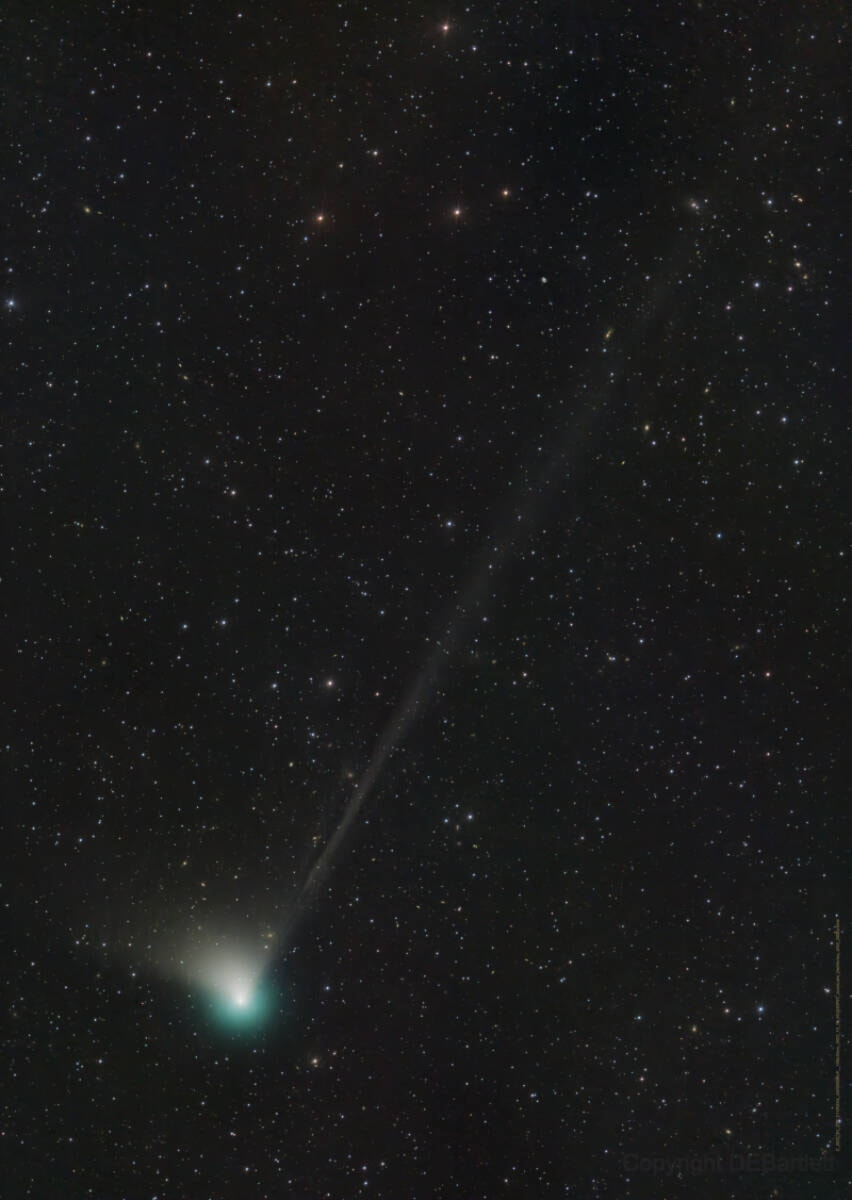In the night sky, a comet is flying by Earth for the first time in 50,000 years.
Steve Coleopy, of the South Cariboo Astronomy Club, is offering some tips on how to see it before it disappears.
The green-coloured comet, named C/2022 E3 (ZTF), is not readily visible to the naked eye, although someone with good eyesight in really dark skies might be able to see it, he said. The only problem is it’s getting less visible by the day.
‚ÄúRight now the comet is the closest to earth and is travelling rapidly away,‚ÄĚ Coleopy said, noting it is easily seen through binoculars and small telescopes. ‚ÄúI have not been very successful in taking a picture of it yet, because it‚Äôs so faint, but will keep trying, weather permitting.‚ÄĚ
At the moment, the comet is located between the bowl of the Big Dipper and the North Star but will be moving toward the Planet Mars - a steady orange-coloured point of light- in the night sky over the next couple of weeks, according to Coleopy.
‚ÄúI have found it best to view the comet after 3:30 in the morning, after the moon sets,‚ÄĚ he said. ‚ÄúIt is still visible in binoculars even with the moon still up, but the view is more washed out because of the moonlight.‚ÄĚ
He noted the comet looks like a ‚Äúbig fuzzy green ball,‚ÄĚ as opposed to the bright pinpoint light of the stars.
‚ÄúThere‚Äôs not much of a tail, but if you can look through the binoculars for a short period of time, enough for your eyes to acclimatize to the image, it‚Äôs quite spectacular.‚ÄĚ
To know its more precise location on a particular evening, an internet search will produce drawings and pictures of the comet with dates of where and when the comet will be in each daily location.
Coleopy notes the comet will only be visible for a few more weeks, and then it won’t return for about 50,000 years.
fiona.grisswell@100milefreepress.net
Like us on and follow us on



